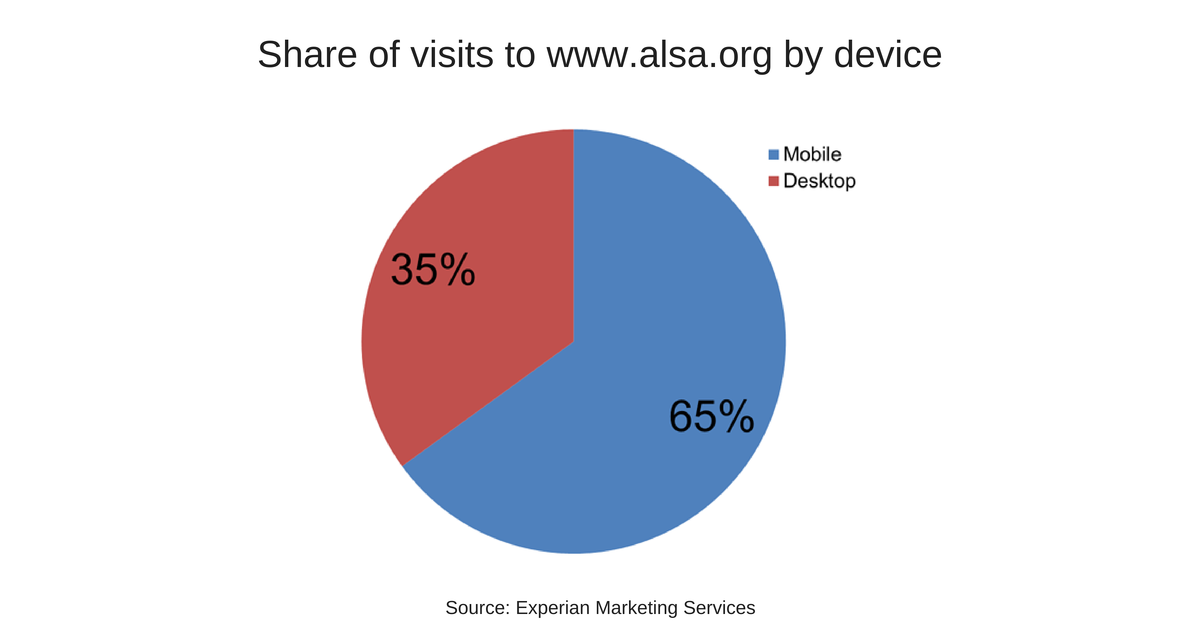While the Ice Bucket Challenge in and of itself had been around for some time, the first tie-in to raising money for Amyotrophic Lateral Sclerosis (ALS) research began on July 15, 2014, when pro golfer Chris Kennedy posted a video of himself pouring the bucket of ice on himself, calling out some friends and relatives to do the same within 24 hours or donate money to ALS research. Two men afflicted with ALS, Patrick Quinn and Pete Frates, saw the video and decided to make the challenge viral in hopes of raising awareness and money for ALS research. Quinn first posted it on his Facebook page “Quinn’s Wins” on July 25, and Frates began writing about the challenge on his Twitter feed on July 31. As the former Captain of the Boston College baseball team, Frates had a considerable following, and from there a social media phenomenon was born.
ALSA: The real winner
According to Experian Marketing Services’ Hitwise® online intelligence data, the big winner in terms of online traffic generated by the challenge has, of course, been The ALS Association. For the 4 rolling weeks ending August 23, 2014, 19 percent of clicks following variations of the search term “Ice Bucket Challenge” went directly to The ALS Association’s website (www.alsa.org), where people can go to donate money for research. In fact, the challenge has been so good for the organization that visits to the site jumped from under 10,000 a day at the end of July to as many as 1.3 million at its peak in August (but more about that in a bit). Interestingly, another 19 percent of ice bucket challenge search clicks went to Wikipedia, where presumably people went to learn more about ALS or the ice bucket challenge itself. Six percent of traffic went to both Facebook and YouTube, as that is where a majority of the Ice Bucket Challenge videos reside.
Social media phenomenon
Regarding social media, we saw a near doubling of the share of traffic to www.alsa.org coming from Social Networking and Forum websites between July 19, 2014 and August 23, 2014. Specifically 22 percent of traffic to www.alsa.org during the week ending August 23, 2014 came from social media sites up from just 11 percent the week ending July 19. During that time, Facebook became an even more dominant driver of traffic to the site. In mid-July, Facebook accounted for 49 percent of the social traffic to www.alsa.org, but by mid-late August, the social media behemoth was responsible for 84 percent of the organization’s social media traffic.
With so much traffic coming from social media, it’s no surprise that so many visitors to The ALS Association’s website were coming from mobile devices. In fact, during the week ending August 23, 65 percent of the site’s traffic came from either a smartphone or digital tablet. Overall, 30 percent of all web visits come from mobile sites and just 27 percent of community organization sites, like www.alsa.org, are from mobile. This is a good time to point out the importance of having a mobile-optimized site in place before marketers launch any type of campaign that will heavily leverage social media.
Millennials and Baby Boomers rise to the challenge
Visitors to The ALS Association website for the 4 rolling weeks ending August 23, 2014 skewed slightly more female to male with a 56/44 percent gender split. By age, the site also skews young. Specifically, those ages 18 to 24 are over 3 times more likely to visit the site than the average online adult. Likewise those ages 25 to 34 are 1.5 times more likely to visit. When it comes to household income, there’s an interesting split with both high and low income households being over represented in terms of visitors. For example, Americans living in households earning less than $30,000 are 42 percent more likely than average to visit www.alsa.org. But those living in households earning $100,000 and up are over 44 percent more likely than average to visit the site. The takeaway is that people from both ends of the spectrum seemed to respond to this challenge and get involved in some way or another: From Millennials, who might not have much money to give but the courage and social media clout to make the trend go viral, to Baby Boomers with perhaps dryer aspirations but deeper pockets.
Has the Ice Bucket Challenge gone cold?
There is no question that this has been a wildly and unexpected win for The ALS Association. But with mercury slowly falling and kids going back to school, the challenge is definitely losing steam. August 21 was the peak moment in terms of visits to The ALS Association website and “ice bucket challenge” searches. Since then, traffic and searches have been dropping sharply daily.
Top celebs join in
A lot of “ice bucket challenge” searches focused on celebrity videos. In fact 55 of the top 100 search variations focused on famous people taking the ice bucket challenge 47 of which named specific celebrities, some of whom did not even post a video. For fun, we also identified the top celebrities Americans wanted to see doing the ice bucket challenge. What follows are those top-searched celebs as well as the date their challenge video was released.
You can also check out our own Experian Marketing Services’ resident “celebrity” Rick Erwin doing five simultaneous Ice Bucket Challenges.



